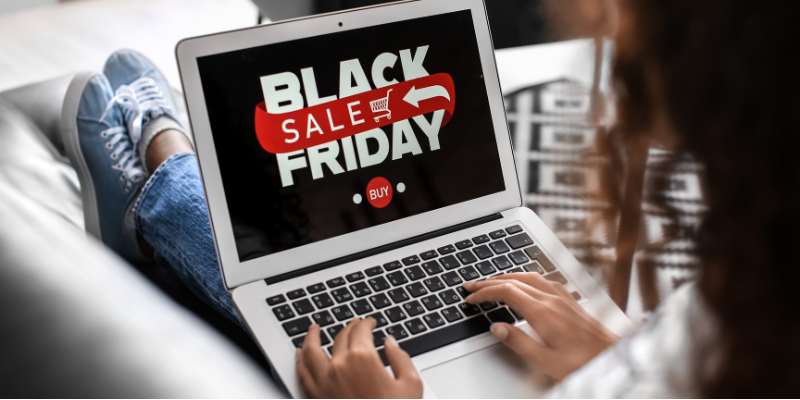Events around the world have been impacted by the spread of COVID-19. While much of the U.S. remains in lockdown, parts of the country are starting to reopen.
Whether you’re located in one of those states or are still under stay-home directives, now is the time to prepare your event or attraction to resume in-person operations. Read on for our guide to reopening.
Do your research
The first thing you should do now to prepare for reopening is to consult with your local government’s health and safety departments about what requirements are needed to consider reopening. The safety of your staff and guests should come first.
The CDC and the White House have released national guidelines, but every state has its own rules and regulations. These can vary by the city or county level as well, so it’s important to make sure that your event adheres to the requirements in your individual location. The U.S.
Chamber of Commerce regularly updates a map with links to individual state’s reopening plans as well as some other useful resources. As of this publishing, 24 states have begun phased reopening procedures.
These regulations should serve as the minimum standard you set for your own event. Be sure to consider the following issues and include protocols for each in your plan:
- Social distancing or space limitations
- Hand-washing or sanitizing stations
- Guest and employee screenings
- Personal protective equipment
Social distancing
For the foreseeable future, most events will need to require or at least encourage social distancing measures, meaning guests must stay at least six feet away from others who are not in their immediate household. Some states require businesses to limit the total number of patrons inside at one time, determined by the total square footage of your space.
Reducing the total number of guests at your event will help, but that’s just the first step. Think about areas where guests typically congregate. Queues or waiting areas are obvious targets. Consider whether you’ll need to add additional queue line space or add physical barriers or floor marketings to help guests social distance.
Did you know? Your Passage account can help you control the crowd flow at your event. Here are some strategies you can use to make it easier for your guests and for yourself.
The booking process
When a guest books a ticket to your event, as soon as their reservation is confirmed, send an email with information about what to expect during their visit, and include a link back to your web page with this information. Send a reminder email the day before or the day of their scheduled visit, and include this information again. It might seem like overkill, but remember that your guests have busy lives (just like you do!) and they may need a few reminders.
You can set up these emails to automatically be sent to guests through your event setup on Passage. Here’s how!
No-contact scanning
If you’re using Passage as your ticketing partner, you can scan guests with zero contact. No paper tickets. No touching. Here’s how:
- Ask guests to display their ticket code on their mobile devices.
- Hold your device over theirs and tap the viewfinder, which will display a green checkmark to let you know the ticket is valid.
- Remember you can also look guests up by name using our Guest List mode, and check them in by toggling the button next to their name in the app. This can be useful if you have a physical barrier set up between staff and guests that prevents you from scanning a ticket.
No-contact payments
Selling tickets, products, or concessions at the door? Your Passage account is compatible with contactless payments such as Apple Pay and Google Pay. Your team never has to touch a credit card or worry about guests getting germs on your terminal.
Maybe you’ve decided to eliminate or discourage in-person transactions this year. Your guests can still purchase tickets on-site! Simply put up signs directing guests to your Passage event page where they can buy tickets right on our mobile web page. They can stay in their vehicles while completing their purchase for optimal social distancing.
Timed ticketing
Timed ticketing can help you control the crowd flow at your event by limiting the number of guests who enter during a given time period (we recommend one-hour time slots but you can customize them however you like!). You set the time slots and a maximum number of guests per slot. This will allow you to keep that line flowing much more quickly, to forecast the number of attendees before the event, and to potentially charge a higher price for tickets that get through the line more quickly.
Assigned seating
If your event takes place in a sports arena, theater, or another venue where guests are typically seated for a majority of the time, now is a good time to add assigned seating to your event if you haven’t already done so. Assigned seating is customizable for your specific event, so you can easily block off areas or sections of seating to help ensure your guests can social distance.
Virtual Queuing
This summer, Passage is launching a virtual queuing feature on our platform which will give you even more power to manage your crowds and wait times, and allow guests to queue up safely. When guests arrive at your event, you’ll check them in by scanning their tickets as you normally would. Redeemed tickets will automatically be added to your virtual queue, and guests will be alerted via email or SMS text when it’s their turn to experience your haunt. As the event owner, you’ll be able to set the capacity, which controls how many guests are called up at a time.
Guests can wait in their vehicles, maybe grab some concessions, or just relax in an open area outdoors while they wait instead of standing in a crowded line. Combined with timed ticketing, virtual queuing will be a powerful tool for you to maintain social distancing at your event while bringing in as much revenue as possible.
Virtual events
Dramatically reducing the number of guests at your event will no doubt have a negative impact on your bottom line. Many event producers are searching for ways to make up the revenue they project losing (or have already lost) due to COVID-19.
One way you can mitigate the impact of reduced crowds is by incorporating virtual events into your in-person gatherings. Adding a ticketed virtual livestream of your event can boost your revenue and allow guests
- Who are immunocompromised to attend without health risks;
- Who don’t yet feel comfortable attending an in-person event to participate;
- Who live far away to attend from their home state.
Learn more about virtual events here or get inspired by these ideas.
Cleaning protocols
Everyone is re-doubling their cleaning efforts these days. We’re washing our hands like we’re scrubbing in for surgery. We carry hand sanitizer with us at all times.
Your guests will expect you to be extra diligent when it comes to cleaning and sanitizing your event location, too. Research your local requirements, and establish a cleaning plan that your staff can stick to throughout your event. This might include wiping down high-touch surfaces at regular intervals, sanitizing certain equipment in between each guest, and requiring staff to wear gloves and/or facial coverings in addition to regular handwashing. Some events are investing in hand-washing stations or touch-free sanitizer dispensers in key locations for guest use.
We recommend reviewing the CDC’s guidelines for cleaning and disinfecting practices. The general framework they suggest implementing includes:
- Normal routine cleaning with soap and water will decrease how much of the virus is on surfaces and objects, which reduces the risk of exposure.
- Disinfection using EPA-approved disinfectants against COVID-19 external iconcan also help reduce the risk. Frequent disinfection of surfaces and objects touched by multiple people is important.
- When EPA-approved disinfectantsexternal icon are not available, alternative disinfectants can be used (for example, 1/3 cup of bleach added to 1 gallon of water, or 70% alcohol solutions). Do not mix bleach or other cleaning and disinfection products together. This can cause fumes that may be very dangerous to breathe in. Bleach solutions will be effective for disinfection up to 24 hours. Keep all disinfectants out of the reach of children. Read EPA’s infographic on how to use these disinfectant productsexternal icon safely and effectively.
Maybe you already do some (or all) of those things. That’s great! Be sure to let your guests know what precautions you’re taking to help them – and your team – prevent the spread of germs.
If your event provides concessions, take into consideration which items could be potential hotspots for a virus to spread. You may decide it’s safer to switch to disposable menus and cutlery, or remove shared condiment stations, for example.
Screening employees and guests
Your state may already require some kind of screening, such as temperature checks or verbal confirmation of symptoms, prior to an employee’s daily shifts. Depending on your situation, screening team members and volunteer staff may be sufficient, or you may want to consider screening your guests as well. This may be controversial in some areas, but remember that the health and safety of your staff and guests are the highest priority.
Do you need to invest in temperature scans?
Fever is one of the telltale symptoms of COVID-19, so a temperature scan may help flag individuals who might have the illness before they enter your event. It won’t identify asymptomatic cases, but refusing entry to those with a high temperature can help prevent the spread of disease at your event and reassure guests that it is safe to visit.
Handheld infrared spot thermometers are one of the noninvasive tools available to quickly and efficiently scan guests at the entrance (FDA-approved models retail for about $150). These need to be held a few inches from each guest’s forehead, so they do require your staff to be in close proximity to guests. Face coverings or personal protective equipment can help mitigate those risks if you choose to implement temperature scans.
Ultimately, the decision of whether or not to scan guest or employee temperatures is yours to make. Be sure to consult your local regulations to determine what is acceptable in your area, and you could even send out a survey to guests who have attended your event in the past to gauge how they would respond to a noninvasive scan prior to entry.
What happens if a guest fails the screening?
If you decide you need to refuse entry to a guest for health & safety reasons, remember to do so with caution and compassion. Give your team extra training on how to handle these challenging situations. Update your refund policy to include contingencies for guests who are turned away because they have a fever or visible symptoms. Alternatives to a refund can include:
- Allowing guests to reschedule their visit for a later date.
- Giving guests a credit to use on a future event ticket.
- Allowing guests to transfer their ticket to a friend.
Make sure you’re providing guests with information well in advance so they know what to expect, and send reminders in the days leading up to your event to help them prepare. Simple, friendly signs help guests meet your expectations and keep everyone safe.
Start communicating with guests now
Your guests will return when they feel comfortable, not just because things have reopened. As event professionals, it’s our job to help them feel safe and at ease. This starts with communication: keep your guests informed on your reopening plans and what they can expect when they visit your event. Are you implementing employee health screenings? Doing extra cleaning? Your efforts only count if guests know about them so they feel comfortable doing business with you.
You should also include your expectations for guests: How should they queue up when they arrive? Will they be required to wear masks? Let them know in advance, so they have time to mentally prepare and secure any supplies they might need before the event.
These communications don’t have to be a boring list of rules; it’s an opportunity for you to re-energize your fans and build faith that your event is a safe place to enjoy.
Communicate your new procedures in as many places as you possibly can. Display a popup on your website with information about your new protocols. Share it on social media. Blast a message or two to your email list. The more informed guests feel, the more comfortable they will be attending your event.
Don’t forget about on-site communications. Consider adding some physical signage to your location, so guests who may have missed (or just forgotten about) your new procedures can be informed when they arrive. Providing your guests with clear information will help things go smoothly when your event reopens.
Need help setting up timed ticketing, assigned seating, or other features for your event? Reach out to our support team. We’re here for you!












